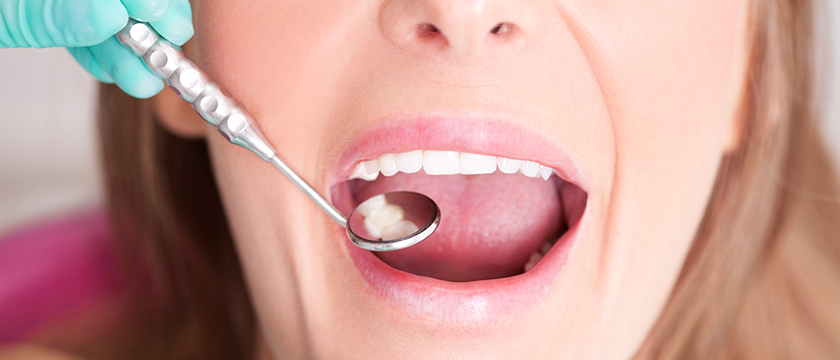 10 Nov 2021
10 Nov 2021
Tooth decay is one of the most common afflictions among Canadians. In fact, 96% of the adult population has had at least one cavity in their life. Cavities also become more common the older you get.
The good news is that tooth decay is mostly preventable. With good oral hygiene and a careful diet, you may never develop a new cavity in your lifetime. Our guide can help you better understand the causes of tooth decay and outline the steps you can take to avoid any future cavities.
Types of Tooth Decay
There are three different types of tooth decay:
- Root Decay: Decay on or around the root of a tooth, just above or below the gumline. This type of decay is also called cervical decay. It is most common among older adults whose gums have receded significantly.
- Smooth Surface Decay: Decay that appears on the flat outside surfaces of the teeth. This type of decay is usually seen among people who are wearing or have worn dental braces since these devices make it harder to brush the outside surfaces of your teeth. It is considered the least severe form of tooth decay and is usually very easy to treat.
- Pit and Fissure Decay: Decay in the tiny holes and crevices on the chewing surfaces of your teeth. This is the most common type of tooth decay because those small areas can be very difficult to keep clean. It usually happens on the molars where grooves and fissures are more prominent.
What Causes Tooth Decay?
Tooth decay is the result of a three-step sequence of events.
- Carbohydrates from the food you eat (chips, cookies, candy, crackers, and white bread are common culprits) get stuck on your teeth.
- The bacteria in your mouth feed on those carbohydrates and turn them into acids.
- Those acids mix into the sticky plaque on your teeth and slowly start to dissolve the enamel.
Once tooth decay occurs, it is difficult to reverse.
Decay will continue to progress until the cavity is drilled and filled. Some dental procedures can disguise the presence of cavities and early decay and improve the look of your teeth. However, these are not considered treatments for this condition. Veneers do offer excellent cosmetic camouflage for areas with large visible fillings, though, so they may still be a good idea after the appropriate treatment has been provided.
Stages of Cavity Development
Human teeth have three distinct layers: the enamel, the dentin, and the pulp. Untreated tooth decay gradually works its way through all the layers over time. If you have a dental cavity, you can expect it to progress through the following stages:
Enamel and Dental Caries
A dental cavity always starts in the outer layer of your tooth: the enamel. This layer is extremely strong and continually rebuilds itself through a process called remineralization, which happens when your mouth is free from food or food residue. If food particles stay in your mouth for long periods, your teeth will not have enough time to re-mineralize themselves and will begin to decay.
Enamel-stage cavities can sometimes be reversed with good diet and oral hygiene. Many dentists will wait until a cavity has progressed into your tooth’s dentin layer to fill it, but not all. Your dentist’s recommended treatment will depend on how quickly the cavity is progressing, how good your diet and oral hygiene are, and your general dental history.
Pulpitis
When a cavity in your tooth’s enamel layer is not treated in time, it will eat through both the enamel and dentin layers of your tooth to reach the pulp layer inside. This layer is directly above your tooth’s nerve, so it is extremely sensitive. A cavity in this layer will probably cause you a lot of pain, and it can only be treated with a root canal and crown.
Periodontitis
Periodontitis is not a true stage in the development of tooth decay, but it does often co-occur with advanced decay. This is because if you have not been taking care of your teeth, you have probably also been neglecting your gums. Periodontitis is a serious and irreversible form of gum disease that requires lifelong maintenance to keep it under control.
Tooth Loss
If you still do not treat a tooth that has become severely decayed, that tooth will start to die. When this happens, it can no longer be saved. The only thing your dentist can do is remove it and replace it with a dental prosthetic like an implant or a bridge. You want to avoid this outcome at all costs, so it is important to never delay cavity treatment when your dentist says it is needed.
Preventing Tooth Decay
Preventing tooth decay is easier than you think. If you want to minimize the number of cavities you will need to have filled in the future, be sure to:
Use Fluoride
Fluoride’s re-mineralizing properties can be astoundingly effective in preventing tooth decay. Use a toothpaste and mouthwash that contain fluoride to help strengthen your teeth over time. The more often you expose your teeth to fluoride throughout the day, the stronger its effects will be. Your dentist can also give you a professional fluoride treatment.
Brush Your Teeth
Brushing your teeth regularly goes a long way toward keeping your plaque levels low. The friction of the brush’s bristles against your teeth disrupts the sticky substance and makes it easier to wash it away. Your toothpaste removes even more plaque and delivers fluoride to your teeth to help them defend against plaque in the future.
Floss
Flossing removes plaque from one of the most neglected spaces in your mouth: the spaces between your teeth. This keeps you from developing cavities in those vulnerable areas.
Monitor Your Diet
You probably already know that consuming less sugar will help you reduce your risk of tooth decay, but the type and timing of sugar intake are just as important as how much of it you eat.
Sugary drinks are worse for your teeth than sweet foods because they can easily deposit sugar particles into tight spaces between your teeth and into the fissures on your molars.
Similarly, consuming a little bit of sugar frequently throughout the day is much worse than having a lot of sugar all at once. When you do this, your teeth are under constant attack from plaque bacteria. They never get the chance to rebuild themselves through remineralization, and eventually, they start to decay.
Schedule Regular Teeth Cleanings
Professional teeth cleanings are the only way to reliably remove tartar (hardened plaque) from your teeth. Since tartar can harbour bacteria and cause decay just as easily as plaque, it is important not to let it build up. Visiting your dentist’s office for a cleaning at least once every six months removes this tartar and makes it less likely that your teeth will develop cavities.
Protect Your Teeth with Help from Trillium Smile Dentistry
 A cavity-free future is possible, but you will need the right support to achieve it. At Trillium Smile Dentistry, your trusted dentist in Mississauga, we want to see you reach this goal. We offer a variety of dental services in Mississauga to help prevent and control cavities, including teeth cleanings, dietary advice, fluoride treatments, and more.
A cavity-free future is possible, but you will need the right support to achieve it. At Trillium Smile Dentistry, your trusted dentist in Mississauga, we want to see you reach this goal. We offer a variety of dental services in Mississauga to help prevent and control cavities, including teeth cleanings, dietary advice, fluoride treatments, and more.
Worried it might be too late to change your ways? We can also help when the damage has already been done. Cosmetic solutions like front teeth veneers can help you restore your smile’s beauty and make you feel proud to start your new cavity prevention routine. Our periodontal maintenance program can also help you fend off the lasting complications of past oral hygiene neglect and set yourself up for better oral health.
Contact us at 905-828-9894 to discuss your dental needs and book an appointment for a cleaning or restoration today.
Also Read:
